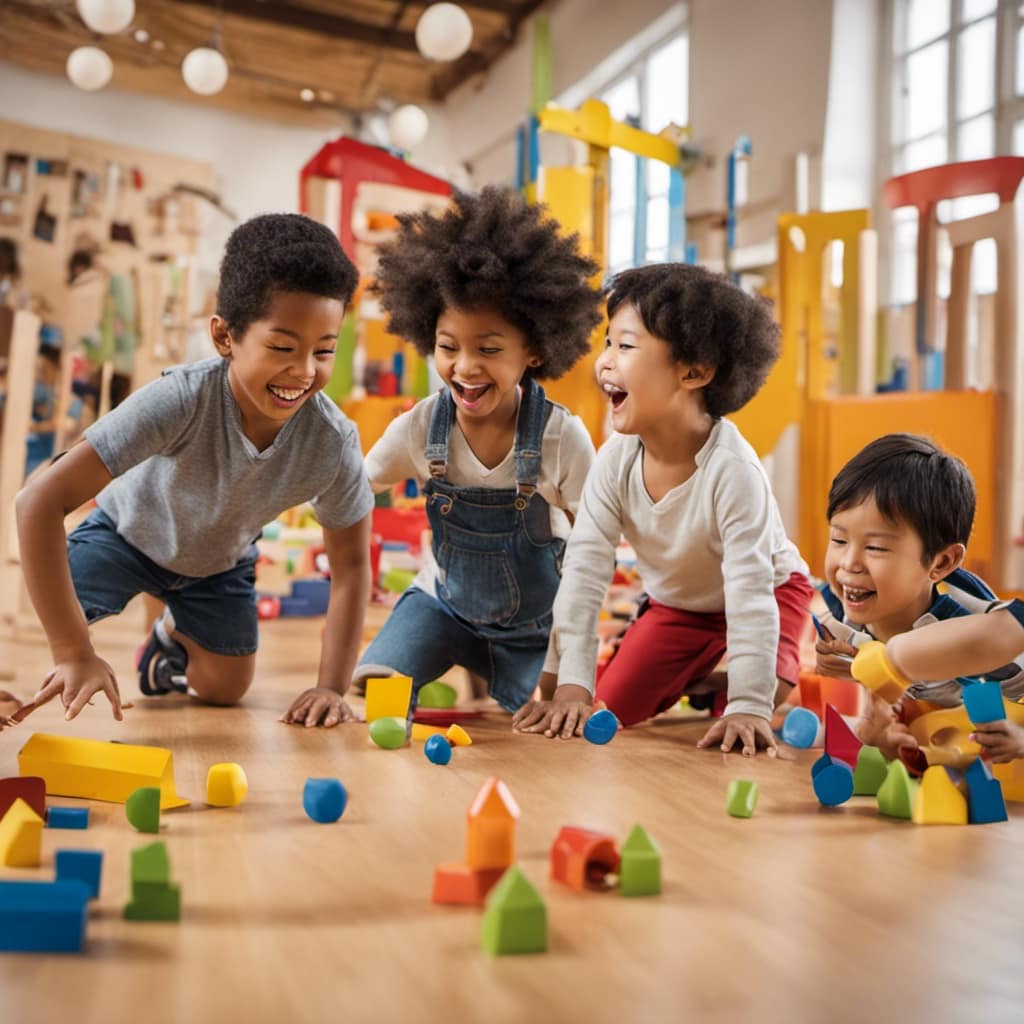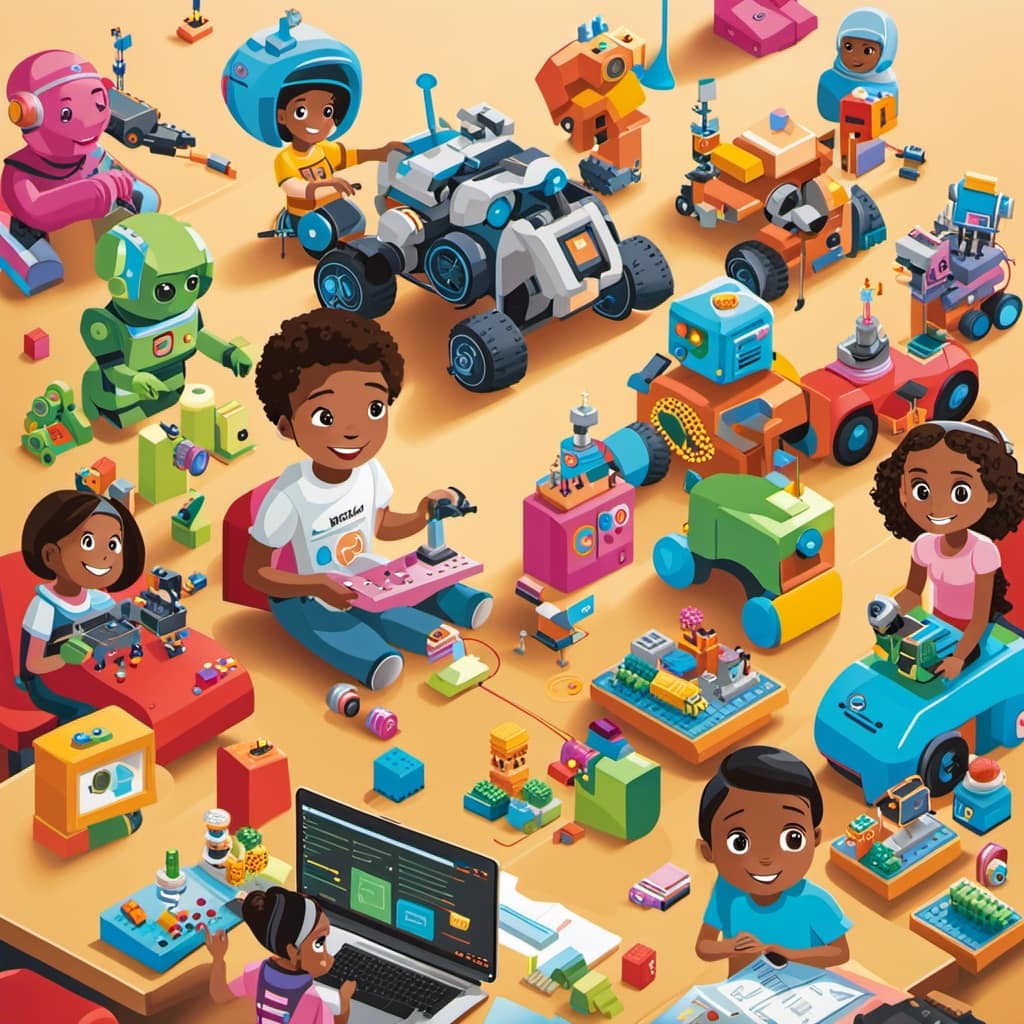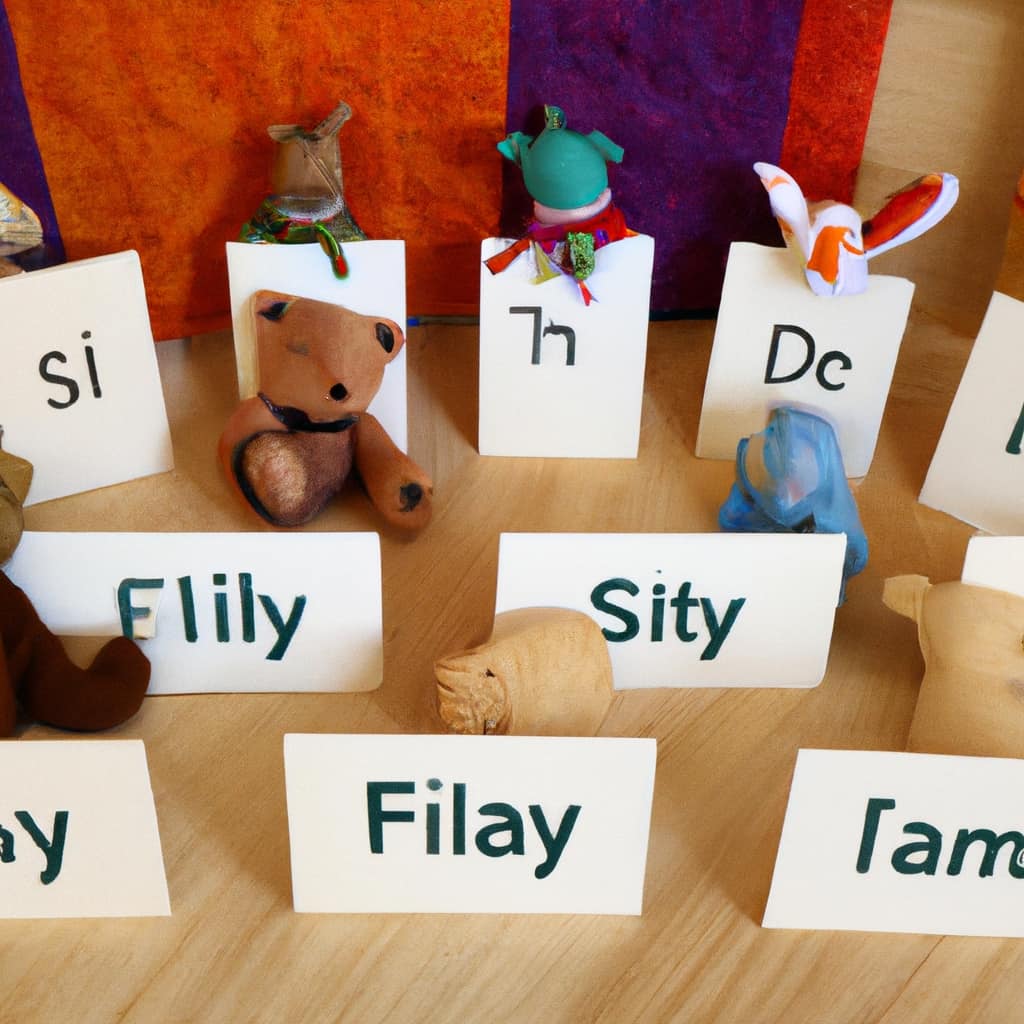As a parent, I am always on the lookout for toys that will entertain my three-year-old while also promoting their growth and development. That’s why I was thrilled to discover Waldorf toys.
These unique toys ignite imaginative play and sensory exploration, providing a wealth of benefits for young children. By integrating arts and emphasizing holistic learning, Waldorf toys promote creativity, language development, problem-solving skills, and social interaction.
Let’s delve into the magical world of Waldorf toys and explore the wonders they bring to our children’s lives.
Key Takeaways
- Waldorf toys promote imaginative play, sensory stimulation, and exploration.
- Imaginative play enhances creativity, language development, and cognitive abilities.
- Sensory stimulation and exploration improve fine motor skills, hand-eye coordination, and problem-solving abilities.
- Waldorf toys foster social skills, such as negotiation, cooperation, and communication.
The Power of Imaginative Play in Child Development
I truly believe that imaginative play is a powerful tool in child development. It helps enhance creativity, problem-solving skills, and social abilities.
Pretend play in early childhood has numerous benefits that contribute to a child’s overall growth and development. One of the key benefits is the impact of sensory experiences on cognitive development. Engaging in imaginative play allows children to explore different roles, scenarios, and possibilities, enhancing their ability to think creatively.
It also stimulates their language development, memory skills, and abstract thinking. Additionally, sensory stimulation and exploration through play improve fine motor skills, hand-eye coordination, and problem-solving abilities. By using their senses to interact with their environment, children develop a better understanding of the world around them and lay the foundation for their creativity and imagination.

Exploring the Benefits of Waldorf Toys for Sensory Stimulation
Engaging with Waldorf toys enhances fine motor skills, hand-eye coordination, and problem-solving abilities. These toys provide sensory stimulation, which plays a crucial role in cognitive development.
Sensory exploration is not only beneficial for cognitive growth but also contributes to emotional well-being. When children explore different textures, colors, and shapes, their brains are actively making connections and building neural pathways. This sensory input helps them understand and make sense of their environment, which is essential for their overall development.
Additionally, sensory exploration allows children to express their emotions and develop a sense of self. By engaging with Waldorf toys that incorporate different textures and materials, children can experience a range of sensory inputs, fostering their cognitive and emotional development.
Nurturing Creativity and Problem-Solving Skills With Waldorf Toys
Developing creativity and problem-solving skills is nurtured when children actively participate in open-ended play experiences with Waldorf-inspired toys. These toys provide a platform for children to unleash their imagination and explore their problem-solving abilities.
Here are two key ways in which Waldorf toys nurture creativity and problem-solving skills:
-
Imaginative Play: Waldorf toys encourage children to engage in imaginative play, where they can create their own stories, characters, and scenarios. This type of play allows children to think creatively and come up with unique solutions to challenges they encounter in their playtime.

-
Sensory Stimulation and Exploration: Waldorf toys often incorporate different textures, shapes, and materials, providing children with opportunities for sensory exploration. By engaging their senses, children develop their fine motor skills, hand-eye coordination, and problem-solving abilities.
Through these open-ended play experiences with Waldorf toys, children can develop their creativity and problem-solving skills in a fun and engaging way.
Enhancing Language Development and Abstract Thinking Through Imaginative Play
Enhancing language development and abstract thinking is fostered through the creative and imaginative scenarios children create during play. Imaginative play not only allows children to have fun, but it also enhances their cognitive abilities.
When children engage in imaginative play, they are using their minds to create and explore different scenarios, which requires them to think critically and problem-solve. This type of play encourages abstract thinking, as children are able to think beyond the immediate and come up with unique ideas and solutions.
Additionally, imaginative play has a significant impact on language development. Children use language to communicate and act out their roles and scenarios, which helps to expand their vocabulary, improve their sentence structure, and enhance their overall language skills.
Therefore, encouraging imaginative play is essential for the holistic development of children.

The Role of Sensory Exploration in Fine Motor Skill Development
I find that sensory exploration plays a crucial role in the development of fine motor skills. Through sensory activities and cognitive development, children engage their senses to explore the world around them.
Here are two ways in which sensory exploration enhances fine motor skills:
-
Tactile Exploration: By touching different textures, children develop their sense of touch and improve their fine motor skills. They learn to manipulate objects, grip them firmly, and perform intricate movements with their fingers.
-
Sensory Play: Sensory play involves activities that stimulate multiple senses, such as playing with sand, water, or sensory bins filled with various materials. These experiences help children refine their fine motor skills as they pour, scoop, and manipulate objects.
Fostering Social Skills and Critical Thinking With Waldorf Toys
In my experience, Waldorf toys have been incredibly effective in fostering social skills and critical thinking in three-year-olds. These toys not only ignite imaginative play and sensory exploration but also promote collaboration and teamwork, as well as foster empathy and emotional intelligence.
To illustrate this point, let’s take a look at the following table:

| Waldorf Toys | Promoting Collaboration and Teamwork | Fostering Empathy and Emotional Intelligence |
|---|---|---|
| Wooden Blocks | Encourage children to build together, taking turns and sharing ideas. | Help children understand the feelings and perspectives of others as they work together to create structures. |
| Dollhouse | Encourages role-play and cooperation as children engage in pretend play scenarios. | Allows children to empathize with the dolls’ emotions and practice problem-solving skills as they navigate social situations. |
| Cooperative Games | Require children to work together towards a common goal, promoting teamwork and communication. | Encourage children to understand and support each other’s feelings, promoting emotional intelligence and empathy. |
Through these Waldorf toys, children learn to collaborate, communicate, and think critically as they engage in imaginative play. They also develop a deeper understanding of others’ emotions and perspectives, fostering empathy and emotional intelligence. Overall, Waldorf toys provide a valuable platform for three-year-olds to develop essential social skills and critical thinking abilities.
Frequently Asked Questions
How Do Waldorf Toys Contribute to a Child’s Emotional Well-Being?
Waldorf toys contribute to a child’s emotional well-being by promoting self-expression and developing emotional intelligence. Through imaginative play and sensory exploration, children can express their feelings, understand emotions, and develop a sense of self.
Are There Specific Types of Waldorf Toys That Are Recommended for Three-Year-Olds?
Yes, there are recommended Waldorf toys for three-year-olds. These toys provide benefits in child development by promoting imaginative play and sensory exploration. They enhance creativity, problem-solving, fine motor skills, and social skills.
Can Waldorf Toys Be Used to Support Children With Special Needs?
Waldorf toys can support children with special needs in various ways. They provide sensory exploration and development, improving fine motor skills and problem-solving abilities. They also foster creativity, imagination, and social skills.
How Can Parents Incorporate Waldorf Toys Into Their Daily Routines and Playtime?
I incorporate Waldorf toys into my daily routines and playtime by encouraging imaginative play and sensory exploration. We create stories, build with natural materials, and engage in sensory activities that enhance creativity and problem-solving skills.
Are There Any Safety Considerations to Keep in Mind When Using Waldorf Toys With Young Children?
Safety considerations are important when using Waldorf toys with young children. Parents should ensure age appropriateness, inspect for small parts, and check for toxic materials. It’s crucial to prioritize the well-being of children during playtime.

Conclusion
In conclusion, Waldorf toys have proven to be a valuable tool in igniting the imaginative play and sensory exploration of three-year-olds.
Through the power of imaginative play, children can embark on exciting adventures, transform into different characters, and unleash their creativity.
The sensory stimulation provided by these toys allows children to engage with their surroundings, enhancing their fine motor skills and problem-solving abilities.
Moreover, the social skills developed through playtime with Waldorf toys foster critical thinking and empathy.
With their unique ability to inspire and captivate young minds, Waldorf toys truly unlock a world of endless possibilities.










